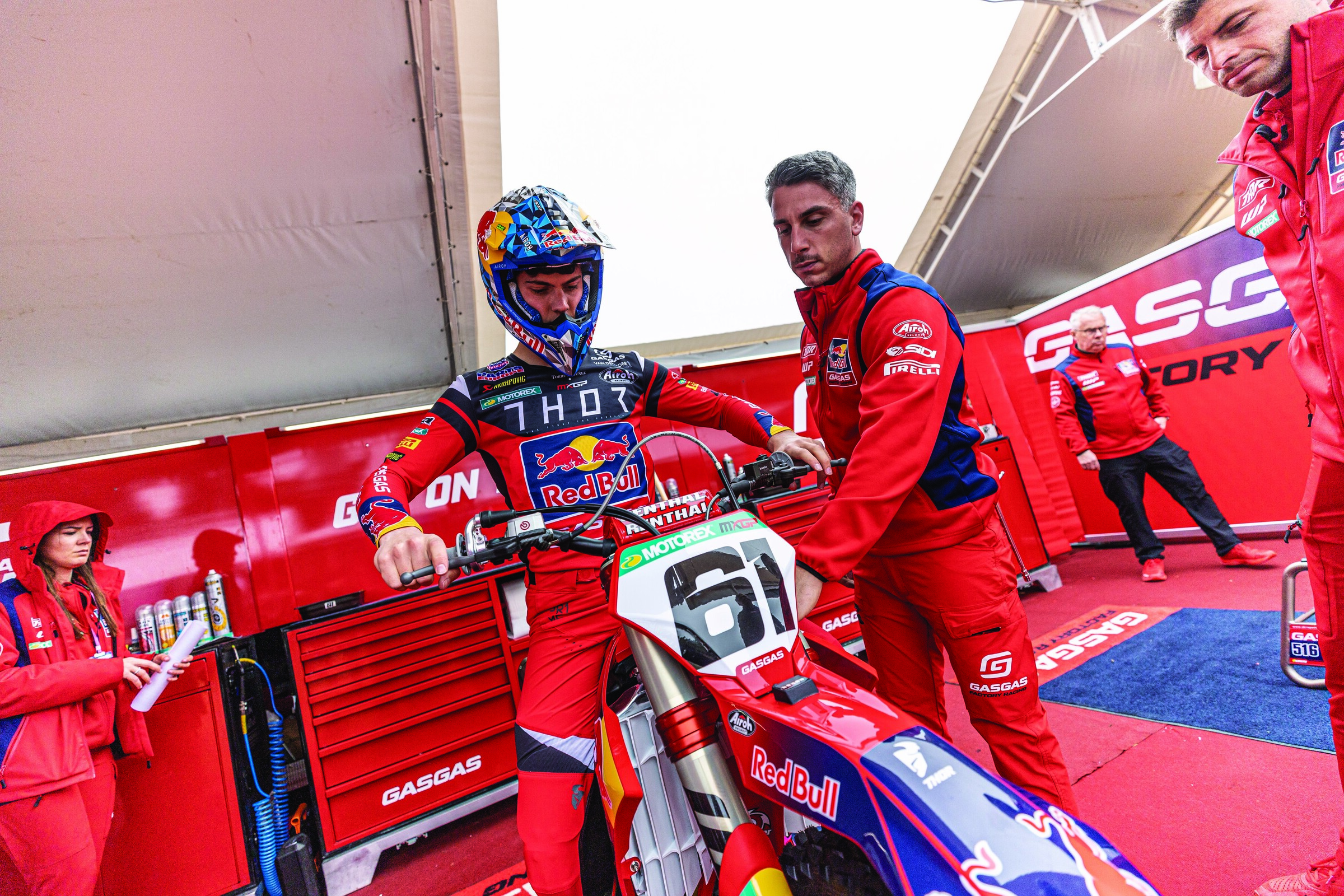Main image courtesy of Juan Pablo Acevedo/GasGas
Some inventions, tools, and techniques have advanced the sport of motocross significantly since their inception. The Racer X staff explains some of those advancements in this feature, “Next Level,” and this month, we’re looking into the future with the help of longtime tech Marshall Plumb, who explains why he thinks, “The future of our sport is in a little electronic box.”
In case you don’t know who Plumb is, he’s been around in this sport for decades. Once an aspiring racer himself, he opted to pick up wrenches and became a pro mechanic, eventually winning a national championship with Guy Cooper in 1990. He also worked for Dunlop for many years, and his business, Marshall’s Racing, is celebrating 25 years this year. So, yeah, he’s been around, and that makes him a great person to offer predictions on what the next big evolution in this sport will be.
“Data Management is endless,” Plumb says. “Over the next five or six years, what we’ll be able to do with it is almost unimaginable. We’re already there with electronics. With all the ECU stuff we have now, the GET systems, the Vortex systems, it’s there. It’s just a matter of getting it programmed into the electronics. I think it can be done. You can electronically sense what a bike is doing, then feed the data back and have it react the way you want it to. In today’s world, if you think about it, it can be done. I look at it from the standpoint of possibilities. You can use data management for engine management, suspension, braking, anything. Data management has the potential to be a bigger game changer in our sport than just about anything else. It provides infinite variability, and the potential is endless if you have the right people on the software and research side of things.”
So what would some of these innovations be, and how would they manifest themselves physically? Two areas that Plumb immediately references are suspension and braking.
“You can make suspension electronically controlled, you can make it speed sensitive,” Plumb explains. “I bought a new Corvette, the C8, and it has a magnetic ride suspension system. It makes a big difference. There are systems that have particles suspended in the shock oil, which you can control magnetically to change the viscosity of the oil. If the bike senses a certain velocity load on the suspension, it could instantly adjust to what’s optimum for the situation. Things like this are out there already, it’s just a matter of getting the right person who can write those programs and make them work in motocross.
“Think about what an advantage it would be on a motorcycle if you could come into a corner and the back brake never skidded. What if you could go two miles an hour faster in every corner? You’re going to be a couple seconds a lap faster. It’s not that far away. I wish I had engineering smarts and could design something like that because I’d be a wealthy person down the road. If you can think of something, it’s possible, it’s just a matter of cost.”
The issue of cost certainly is a hurdle that’d have to be addressed, especially considering that for some of Plumb’s ideas to be legal in the sport, they’d probably have to come stock on production bikes. But, as Plumb points out, technology has a way of becoming more affordable over time.
“I’ve had a couple Corvettes, and this latest one I have, it’s unbelievable what they’ve done with the electronics. They’ve nailed it,” Plumb says. “Companies like Porsche and Ferrari have had stuff like that for a long time, but you paid for it. Now you can buy a $100,000 car and it’s unbelievable what it does. In today’s world, $100,000 isn’t that much. Don’t get me wrong, it’s a lot, but a pickup truck these days is $80K.”
There’s also the concept of team bikes sharing data with each other in real time during an actual race using tools like GPS. This is something companies like Tesla already do. Using this idea to improve the ride of a passenger car on paved roads is obviously much different than applying it effectively in motocross, but the proof of concept does already exist.
“I couldn’t tell you how that would work, but I think it’s possible. If you get the right technical person, the right data person, in the right place, you can do anything,” Plumb says. “I’ve got a lot of friends in NASCAR, and I’ve gone to testing sessions when they’re using data. They can’t use it when they’re racing but they do when they’re testing. It’s amazing, the data they have come in. You can see in real time what’s better and what’s faster. You could download data from Chase Sexton’s and Jett Lawrence’s bike and compare it. You can look at everything, from shift points to how many times the throttle has been opened. It’s all out there. It’s just a matter of understanding it and making it work.”
Of course, at a certain point you’ve got to wonder how much technology a weekend warrior needs packed into their machine. Let’s be honest, most people don’t need it. However, needs and wants are two different things, which Plumb is quick to point out.
“A good analogy would be, do we need a phone that gets internet and does all these different things? But how many people go buy a new phone every time Apple comes out with one? Twenty years ago, what we have now wouldn’t have seemed likely, or even possible. With everything that’s possible with data and electronics now, that’s what’s capable of taking technology to the next level.”









